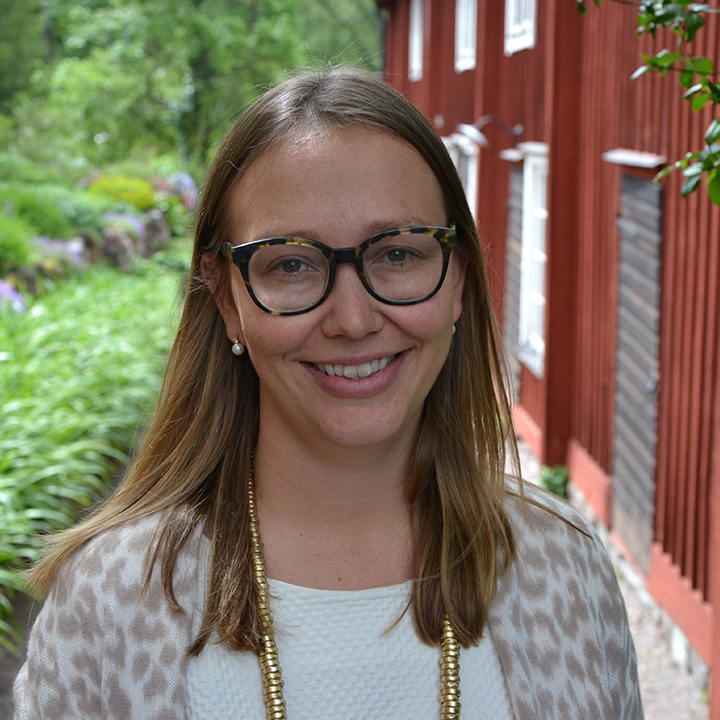What is Backåkra and why was it special to Dag Hammarskjöld?
Dag Hammarskjöld loved the scenery and coastal landscape of this part of southern Sweden, called Österlen. While he was Secretary-General of the United Nations he spent much of what free time he had here, walking along the sandy shoreline and revelling in the long summer days. He most often stayed in a small fisherman’s cottage near the sea, and it was his good friend the artist Bo Beskow who found Backåkra, a rundown farm from the 1840s, and suggested Hammarskjöld make it his own.
So in 1957 he bought Backåkra and under Beskow’s watchful eye he had the farm renovated and decorated. The two corresponded often, with Hammarskjöld involved in both the big and small decisions around the renovation. The work even went beyond the building itself and the surrounding 74 acres of land were turned into a sanctuary and nature reserve. Hammarskjöld’s plan was to make the farm his home, a quiet and peaceful retreat after an illustrious and hectic UN career. But sadly, due to his early and tragic death in 1961 Hammarskjöld never actually got to live at Backåkra.
What happened to Backåkra after Hammarskjöld’s death?
In his will, Dag Hammarskjöld left Backåkra to the Swedish Tourist Association. The Association transformed the farm into a museum where his private possessions and gifts from around the world were exhibited together with furniture and art from his apartment in New York, which Beskow had gone through and brought back.
For many years Backåkra operated as Hammarskjöld had intended, serving not only as a museum but as a gathering place for the preservation of nature and culture, as well as conference space for meetings on topics related to the UN. The southern wing of the house was also set aside for use by the members of the Swedish Academy in the summer months, as stipulated in Hammarskjöld’s will. Then regrettably, in 2011 Backåkra was forced to close due to pressing renovation needs and a lack of financial resources.
What is the state of Backåkra today?
It was a real heartbreak for me personally when Backåkra closed. I have always felt it is a crucial part of Dag Hammarskjöld’s legacy, home not only to so many of his personal things but also a testament to his love of nature and reflective solitude. To that end I have worked heartily in my role as Chairman of the Hammarskjöld Family Association to set up a new foundation, Stiftelsen Dag Hammarskjölds Backåkra, which since 2015 has taken over ownership of Backåkra.
The Foundation, established by the Hammarskjöld Family Association, the Swedish Tourist Association and the Swedish Academy, has successfully procured grants and financial resources to fully refurbish the farm and I am delighted that after many months of hard work we have now reopened Backåkra to the public. One wing hosts the newly designed museum and exhibition space as well as a museum shop and café. The southern wing is then reserved for organisations and researchers working on issues related to Hammarskjöld’s legacy to host conferences and events.
What surprised you the most during the renovation process?
The size and scope of Dag Hammarskjöld’s collection of modern art and modern furniture. Wherever I turned during the renovation process it felt like we discovered a new piece of invaluable art or furniture that I hadn’t seen before. It became very clear to me that Hammarskjöld not only had a deep appreciation for modern art but an incredible eye for rarity and quality. It’s a joy that we can now share these items with the public again!
What is your favourite thing in the museum?
I would have to mention two things: The Barbara Hepworth sculpture “Single Form” and the ice-axe from Sherpa Tenzing. The small wooden sculpture was in fact one of Dag Hammarskjöld’s favourite objects and he kept it on the desk of his New York apartment. Many may recognise the sculpture because a full-scale version of it stands proudly outside the front of UN headquarters in New York. Hepworth was a friend of Hammarskjöld’s and after his death she was commissioned to recreate this favourite sculpture, leaving an obscured message on the inside: “To the Glory of God and the memory of Dag Hammarskjöld”.
The ice-axe is originally also from Hammarskjöld’s modernist New York apartment and it was a gift to him from Sherpa Tenzing Norgay. Together with Sir Edmund Hillary, Tenzing became the first to concur the summit of Mount Everest just a few weeks after Hammarskjöld had taken over at the UN. It amazes me that an axe that was part of such an epic journey now it hangs here at Backåkra.
What do you hope people who visit Backåkra will take away with them?
I hope people will come away with an appreciation for the uniqueness of both Backåkra and the man behind it. There is a distinct natural beauty about this place and hopefully visitors are moved by the scenic landscape and Dag Hammarskjöld’s work and spirit, which one encounters in a truly distinctive way here.
If you would like to visit Backåkra or need more information including opening times and directions please visit the Backåkra website.

 Peder Hammarskiöld
Peder Hammarskiöld Annika Östman
Annika Östman Jemina Holmberg
Jemina Holmberg